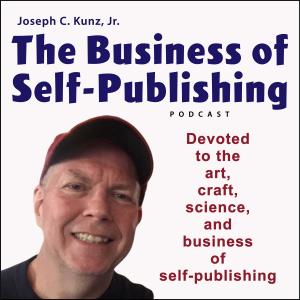The Business of Self-Publishing

3 Steps to Creating a Winning Sell Sheet for Your Book
Synopsis Sell sheets have a simple mission. To Sell More Books. They're really just a way to showcase the benefits of your book in a concise and impelling way. And if your sell sheet is created and utilized skillfully, it can become a powerful marketing tool – especially when it’s included as part of your media kit. What You Will Learn 1. You will learn the three most important steps to creating an effective sell sheet. 2. You will learn how important it is to your own financial success to study the sell sheets of other books and authors that are successful. 3.You will learn how imperative it is for you to ALWAYS keep the reader in mind. Introduction Sell sheets have a simple mission. To Sell More Books. They're really just a way to showcase the benefits of your book in a concise and impelling way. And if your sell sheet is created and utilized skillfully, it can become a powerful marketing tool – especially when it’s included as part of your media kit. But in spite of the fact that it has a simple mission, is only 8.5” x 11”, and not overly difficult to create, many sell sheets that I see are still not very good. So, here’s how to start creating a winning sell sheet for your book: Step # 1. Look At The Sell Sheets Of Other Books It’s easy to search Google Images to find sell sheets to look at. If your book is non-fiction, for example, find the sell sheets of non-fiction books. Try to find books that are similar to yours. See what images, and colors, and copy are being used. How are they communicating their message about the book they are selling? How many images are they using? How big are those images on the page? How much white space is on the page? What are the hot points about their book that they are spending the most time on? Are they using bullet points? How are they displaying the information? Is the author’s head-shot included? Are there any testimonials? Are they using a one-line benefit statement on the top of the page? How is their contact information displayed? If you answer these questions, you will start to learn the differences between an ineffective sell sheet, and one that has the ability to capture the attention of the reader and sell more books. Step # 2. Keep The Reader In Mind Identifying and addressing the reader’s needs is the most fundamental concept in book marketing. Your sell sheet will be a complete failure if their needs are not discussed in a convincing way. The reader must truly believe that you have the answers they are looking for. You will not sell books without accomplishing this. Your sell sheet must address these needs quickly and directly. Readers don’t have the time or patience for long-winded and flowery sentences. And they don’t have any tolerance for ambiguous or deceptive language. Readers are way too sophisticated for this. They want to quickly understand how your book will benefit them. If you genuinely did the research for your book, and indeed understand your topic, you will certainly understand who the readers are for your book. Therefore, you should easily be able to write copy that shows the readers that you understand them and that you are the one that can help them solve their problems. This will unequivocally help you make an emotional connection with the reader, which will help you sell more books. Step # 3. Include A Great Cover Image Having an eye-catching and pleasant-looking book cover is important for many different reasons. Most of the marketing reasons are probably apparent to you already. But, including an image of your book’s cover can also help to make the book seem more real, genuine, and authentic. It’s concrete evidence to your reader that you have created a finished book. The cover image also allows the reader to project their own hopes and desires onto your book. This might help them to read more into your book’s offering than your own copy might be able to give them.






 Visit Podcast Website
Visit Podcast Website RSS Podcast Feed
RSS Podcast Feed Subscribe
Subscribe
 Add to MyCast
Add to MyCast